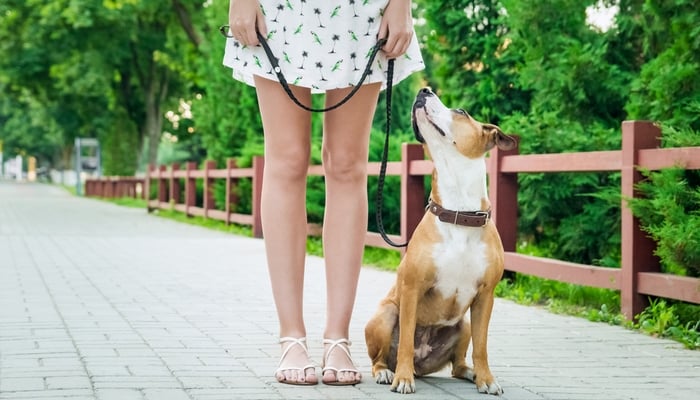Not all dog leashes are created equally. Some owners make the mistake of purchasing the cheapest leash they can find at their local pet shop. Unfortunately, learning how to choose the right dog leash should not be based on price.
There are about eight different leashes available, and they all have different uses. In fact, you may need to purchase more than one leash for your dog for a variety of tasks. Depending on where and how you'll be using the dog leash, you may want to have a couple different types always on hand.
When learning how to choose the right dog leash to walk your pooch, there are four things you need to keep in mind:
- Purpose – How will you be using this leash (hiking, daily walks in the park, etc…)
- Material – Is there a chance your dog may chew the leash? Is your dog a strong puller?
- Length – Are you walking your dog in an open area or down a crowded city street?
- Hardware – Is it durable enough to hold your dog? Is it easy to attach to Fido's collar?
Once you've answered these questions, you'll have a pretty good idea of the features that you need to be looking for. Now, let's talk about the different types of leashes available.
MORE TIPS: How-To Guides and Videos on Dog Supplies
How to Choose the Right Dog Leash
 The standard dog leash
The standard dog leash
The standard dog leash is ideal for almost any dog in any situation. They are typically between 4- and 8-feet in length. These leashes are ideal for daily walks, hiking adventures and outings in the park. They keep your dog close, while still giving him a little room to sniff around.
You can get these leashes in a variety of materials from leather to nylon to chain. Whether you need a durable leash for a dog that pulls and chews or you're just looking for a leash to have on hand when you bring your pup to the vet, a standard leash will work just fine.
For active dog owners that ride bicycles with their dogs, there are a variation of the standard dog leash that's known as either bicycle leashes or hands-free leashes.
No-pull and martingale dog leashes
 No-poll and martingale leashes are specifically designed for dogs that pull. You should try to teach your dog how to properly walk on a leash before trying one of these products, as they can be dangerous if not used correctly.
No-poll and martingale leashes are specifically designed for dogs that pull. You should try to teach your dog how to properly walk on a leash before trying one of these products, as they can be dangerous if not used correctly.
If you cannot make your dog behave on a leash with consistent training, you may need to invest in a no-pull dog leash option. They wrap around your dog's head or abdomen and tighten when your pet pulls on the leash.
Be sure to watch a training video and read the training instructions that come with the leash before trying it with your dog. If you're nervous, ask a professional dog trainer for help. It will cost a bit more money, but it will be worth it to know that your dog is safe and you won't cause him an unnecessary pain.
For more information on training a dog to walk on a leash, watch my video guide on the subject.
RELATED GUIDE: How to Train A Dog To Walk On A Leash
Retractable dog leashes
A lot of pet owners like the idea of retractable dog leashes and they are a very popular leash option supposedly due to their convenience. Your dog gets lots of room to romp and sniff, and you still have complete control over him. Right? WRONG!
The longer a leash is, the less control you have over your dog.
Some retractable leashes are more than 30 feet long. Let's say a strange dog comes running up to your small breed dog while he's 25-30 feet away from you. Are you going to be able to get to him before the other dog attacks? No. What if your large dog gets himself tangled around a tree 25-30 feet away from you and the leash begins to choke him. By the time you get him freed, irreversible damage could already be done.
The length of the leash isn't the only problem. The long ribbon-like leash can also be dangerous. It can burn your skin if you're trying to hang on to it and it slides through your hand. It could also become wrapped around your pet's neck or leg. This would cut off circulation and possibly even cut into his skin.
Let's make a long story short and just say that retractable leashes are not safe. I personally do not recommend them for any dog in any situation. When learning how to choose the right dog leash, it's best to stay away from these types of leashes.
WATCH NEXT: How to Train A Dog To Poop On A Leash












